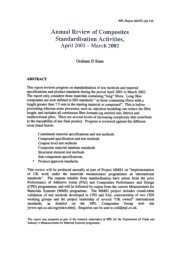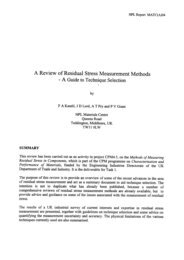Dimensional Measurement using Vision Systems - NPL Publications ...
Dimensional Measurement using Vision Systems - NPL Publications ...
Dimensional Measurement using Vision Systems - NPL Publications ...
You also want an ePaper? Increase the reach of your titles
YUMPU automatically turns print PDFs into web optimized ePapers that Google loves.
<strong>Measurement</strong> Good Practice Guide No. 39<br />
The latest development in digital transmission is the Camera Link cable specification. It<br />
includes data transmission, camera control and asynchronous serial communication, all on<br />
one cable. The standard has a maximum data rate of 2.3 GB per second. This standard has<br />
been embraced by all the major camera and frame grabber manufacturers, with all the<br />
latest hardware being designed to use it.<br />
5.3 ANALOGUE CAMERAS<br />
5.3.1 Interlaced (or synchronous) cameras<br />
Still the most commonly used, analogue CCD cameras operate <strong>using</strong> either RS-170 or the<br />
CCIR video standards. The output signal requires digitising by a frame grabber, the<br />
operation of which is described in Section 6. The scan mode of this type of camera is<br />
interlaced. This means that to build a complete image the camera has to make two<br />
exposures, odd lines first, then even. The separation of these images is 20 ms, so this type<br />
of camera is not suitable for high-speed imaging. The effect of this is called the field offset.<br />
The video output is constant or synchronous, at 25 frames per second. The transmission<br />
time of a new image can be up to 80 ms after the request from the vision system.<br />
5.3.2 Progressive scan cameras<br />
This type of camera allows the image to be built up sequentially, row by row. As only one<br />
exposure is required, transmission of the image is in its entirety, which makes progressive<br />
scan cameras ideally suited to high-speed applications. Processing of the image is also<br />
faster than with interlaced scans, since there are no delays caused by having to reassemble<br />
the image.<br />
5.3.3 Asynchronous cameras<br />
An asynchronous camera is able to capture an image on demand from the vision system.<br />
This allows faster image transmission (40 ms) than standard cameras, as the camera does<br />
not have to wait for the end of the current image before capturing the new image. This<br />
type of interlaced camera is well suited to applications where fast moving parts need to be<br />
inspected. The vision system can trigger the camera and illumination at the same instant.<br />
However, to avoid the problem of the field offset effect, with high-speed applications, only<br />
one field is transmitted, hence the image contains only half the vertical resolution.<br />
44
















